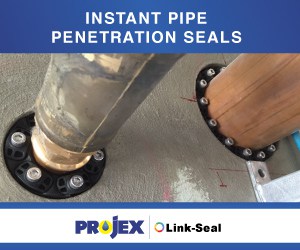SA Water is installing advanced smart water network technology across four locations in metropolitan and regional areas in South Australia following the success of the technology in an Adelaide trial.
Using this technology enables SA Water to identify and proactively fix faults before they impact its customers and commuters. The monitoring and collection of data from the city’s smart water network has helped prevent 29 main breaks since it went live in July 2017.
SA Water’s Chief Executive, Roch Cheroux, said he now hopes a trial expansion to more areas across the state can achieve similar results.
“We know a reliable water service is important to our customers and we want to make sure we’re doing our best to meet this expectation,” Mr Cheroux said.
“We won’t be able to stop every leak or break; however, positive results in the Adelaide CBD have proven the use of emerging and innovative technology can certainly help reduce the frequency and impact of these incidents.
“An analysis of our water network identified four places appropriate for expanding our trial to – Athelstone, North Adelaide, Penneshaw and Port Lincoln.
“The type of technology being installed at each location differs, depending on the issue we are trying to address. Athelstone for example, has a relatively high rate of water main failures – the pipes move a lot due to some of the most reactive clay soils in Adelaide and there is high supply pressure as a result of the area’s topography.
“To help combat this, we’re installing a pressure modulating control station, as well as sensors to monitor the pressure and sound activity within the network. Data from the sensors will enable us to use the control station to remotely measure and maintain a stable water pressure in the network at varying periods of demand through the day.
“We’ll also be trialling the use of several sensors along a large trunk main on Gorge Road in Athelstone, with the specific aim of reducing the impact of breaks and leaks on commuters in a high traffic area.
“In total, 35 pressure sensors (including 15 transient loggers), 19 flow meters, 120 acoustic leak detection sensors and two water quality sensors are being progressively fitted across the four locations in coming months.
“In addition, around 300 smart meters already installed at residences and business in Penneshaw, will soon be operational and providing water consumption data to our local customers through a secure online portal.”
SA Water is also trialling a smart wastewater network in Gawler and Stonyfell, and is one of the first Australian water utilities to use the technology in a whole-of-suburb approach.
“In Stonyfell, the local network is being equipped with flow and level sensors to monitor the movement of sewage, with the aim of detecting pipe blockages and preventing overflows,” Mr Cheroux said.
“In Gawler, we’re installing odour detection sensors and weather stations, to better understand the behaviour of odour in this part of the network and how we can better manage the issue over time.
“In total for the wastewater network, there will be 88 level sensors, 88 odour detection sensors and eleven weather stations.
“The combination of technology across both types of network, a world-leading analytics platform and the expertise of our smart network team will give us a more detailed view of our underground systems and how we can best manage them for the benefit of our customers.”
SA Water is investing approximately $9 million in the roll-out of its smart water and wastewater networks.
Equipment across all six locations is planned to be transmitting near real-time information back to SA Water’s Operations Control Centre before the end of the year, with the full benefits expected to be realised by mid-2019.
Photo credit: SA Water. From left to right, the image shows Allwater Smart Networks Technician Adrian Cavallaro, SA Water Lead Planner of Wastewater Assets Craig Williamson, and SA Water Chief Executive Roch Cheroux.
















